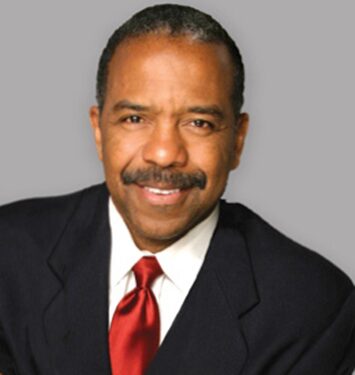Bernard A. Harris, Jr.
Class of 2000
- President and CEO Vesalius Ventures
- Chief Executive Officer National Math + Science Initiative (NMSI)

Dreams are the reality of the future, and our dreams tell us who we really are. Nothing is impossible if you believe in your dreams.
Bernard Harris Jr. was born in 1956 in Temple, Texas, but lived in Houston until the age of six. When he was only five, Harris accompanied his parents to the Johnson Space Center. Amazed by what he saw, that experience would have a tremendous effect on his future. The following year, his parents divorced, and he had no further contact with his father until age 18.
"My mother is the one who had the greatest influence on my life," he says. "All the women on her side of the family were matriarchs." Harris's great-grandmother, whose parents were slaves, raised nine children on her own after her husband, a farmer, died suddenly. She became a pillar of her community, and her strong feelings of responsibility toward her family were passed down to her daughter and granddaughter.
"Education is how my mother's family separated itself," says Harris. "Oakwood is a small, rural community, and we were one of the first families to be educated. It started with my great-aunt, who earned a master's degree in home economics. That led to my mother getting bachelor's and master's degrees in education."
Following his parents' divorce, Harris, along with his siblings and mother, moved in with his grandmother for a year. While his mother searched for a teaching position, she worked as a cook at a truck stop. "My grandmother saw an advertisement in the post office that said teachers were needed on the Navajo Indian reservation," says Harris. "My mother applied and was hired by the Bureau of Indian Affairs. She initially moved by herself to Greasewood, Arizona, to get settled before we were able to join her."
It took Harris's mother six months to earn enough money to buy a car, enabling her to drive back to Texas to pick up her children and return to the reservation. They lived in a community of only 600 people. "Our housing looked like a military complex," says Harris, "but I thought it was a big step up from where we had been living."
Harris's mother remarried when he was 11, and his stepfather, a policeman, was a positive figure for him. "I owe a great deal to him," says Harris. "What better role model could you have as a young man than to have your father out serving the public?" Two years later, Harris and his family moved back to Texas, settling in San Antonio.
Harris was 13 on July 20, 1969, when Neil Armstrong became the first human being to walk on the moon. From then on, Harris watched all the space launches and read all he could find about astronauts. "When there was a space mission going on, I would go out at night and look at the stars," he says. "I would put myself in their place and share their experiences vicariously." He joined the science and rocket clubs at school and helped form an explorers club.
Meanwhile, Harris also participated in football, basketball, and soccer, and he played in his school's marching band. As a sophomore, he formed a rhythm and blues band, which he stayed in for the next four years. He earned his own way playing on weekends and working as a bagboy at a local grocery store. He also worked at a nearby Hilton hotel in the maintenance department and as a laborer for a landscaping company.
Harris attended the University of Houston and earned a bachelor's degree in 1978. From there, he entered the Texas Tech University School of Medicine. He did his residency at the Mayo Clinic and was surprised on his first day to discover that his teacher had once worked for NASA. Once Harris shared his dream of being an astronaut with his teacher, he was put into contact with NASA, where he was advised to get research experience. He did research on osteoporosis with some of the nation's top physicians and parlayed that into a fellowship in endocrinology at NASA's Ames Research Center in California after completing his residency in internal medicine.
In 1987, after he finished his fellowship, Harris applied for the astronaut program. That year, NASA selected 20 candidates, Harris among them. In the end, however, only 15 could be accepted, and Harris did not make the final cut. Instead, NASA offered him a job at its Johnson Space Center as a clinical scientist and flight surgeon. "It was a double-edged sword," says Harris. "It gave me a chance to either shine or shoot myself in the foot. I had two years to prove myself." In 1990, Harris once again applied to be an astronaut, and in the summer of 1991, he was accepted into the program.
Harris has flown two space shuttle missions. On his first flight aboard Columbia from April 26 to May 2, 1993, he carried the first Navajo item into space, a flag blessed by a Navajo medicine man. In February 1995, Harris became the first African American to walk in space when Discovery hooked up with Russian space station Mir. He later became president and CEO of Vesalius Ventures, Inc., a venture capital accelerator that invests in medical informatics and technology.
Harris tells audiences what it was like to dream of becoming an astronaut. "You have to commit yourself to your dreams," he says. "You have to know what you want and be willing to work hard to accomplish your dream."
